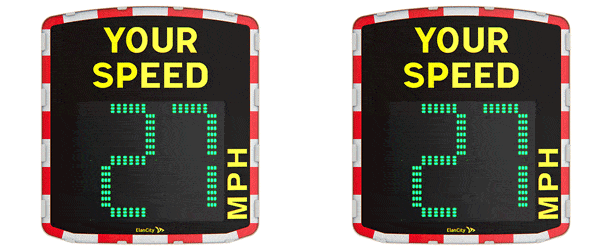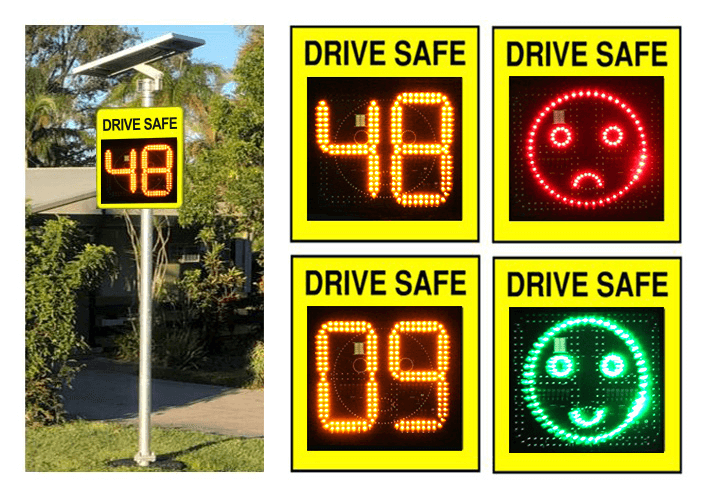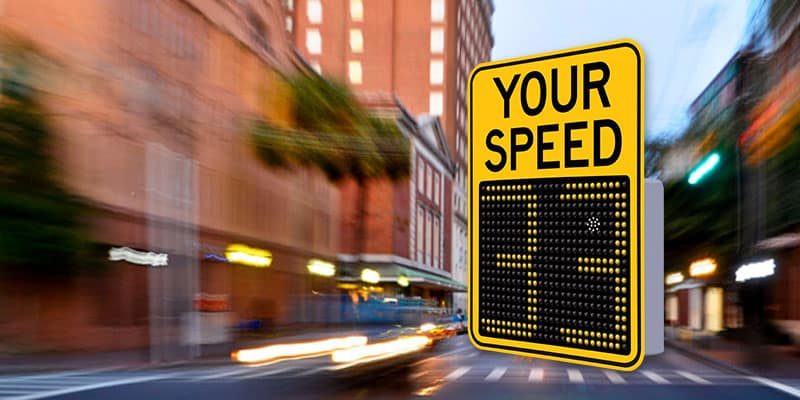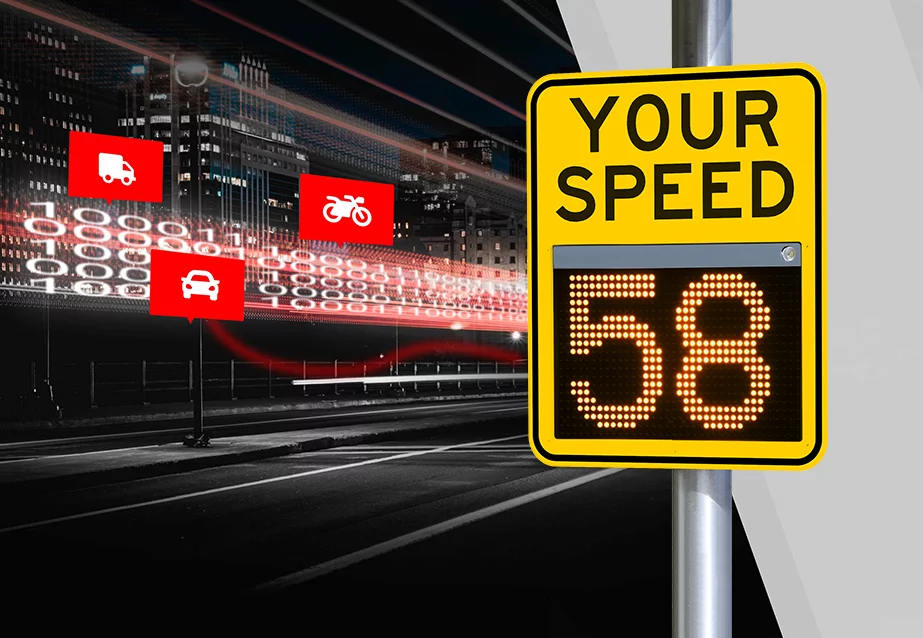The Environmental Benefits of Using Speed Radar Signs
In an era where sustainability and environmental consciousness are at the forefront of societal concerns, innovative solutions that promote safety, reduce energy consumption, and lower emissions are invaluable. Among these innovations, speed radar signs, also known as radar speed signs, have emerged not only as effective tools for traffic management but also as instruments of environmental stewardship. This article delves into the environmental benefits of using speed radar signs, exploring how they contribute to a greener and more sustainable future.
Table of Contents
Understanding Speed Radar Signs
Speed radar signs are electronic devices that display the speed of oncoming vehicles using radar technology. These signs provide immediate feedback to drivers about their speed, often flashing when a vehicle exceeds the posted speed limit. By increasing driver awareness, these signs encourage compliance with speed limits, thereby enhancing road safety and reducing the environmental impact of vehicular traffic.

Reducing Emissions Through Speed Control
One of the most significant environmental benefits of speed radar signs is their ability to reduce vehicle emissions. Speeding not only increases the risk of accidents but also leads to higher fuel consumption and greater emissions of pollutants such as carbon dioxide (CO2), nitrogen oxides (NOx), and particulate matter (PM).
Fuel Efficiency and Emissions
When vehicles travel at optimal speeds, typically around 50-60 mph for most cars, fuel efficiency is maximized. Speeding, especially at higher speeds, causes engines to operate less efficiently, burning more fuel per mile traveled. By encouraging drivers to adhere to speed limits, speed radar signs help maintain vehicles within their most fuel-efficient operating range. This results in:
- Reduced Fuel Consumption: Vehicles consume less fuel when driven at optimal speeds, leading to lower overall fuel usage.
- Lower CO2 Emissions: As fuel consumption decreases, so do CO2 emissions, contributing to the fight against climate change.
- Decrease in Other Pollutants: Reduced fuel consumption also means fewer emissions of other harmful pollutants like NOx and PM, which are linked to respiratory problems and other health issues.
Mitigating Traffic Congestion
Traffic congestion is a significant environmental issue in urban areas, leading to increased emissions, noise pollution, and energy wastage. Radar speed signs play a crucial role in mitigating congestion by promoting smoother traffic flow.
Smoother Traffic Flow
When drivers adhere to speed limits, especially in areas prone to traffic congestion, the flow of traffic becomes more predictable and uniform. This reduces the stop-and-go driving patterns that are common in congested areas and that contribute to higher emissions. Key benefits include:
- Consistent Speeds: Maintaining consistent speeds helps prevent the abrupt acceleration and braking that contribute to higher fuel consumption and emissions.
- Reduced Idling: Smoother traffic flow means less time spent idling in traffic jams, which directly lowers emissions from idling engines.
- Efficient Traffic Management: Speed radar signs, when integrated with intelligent traffic management systems, can help dynamically adjust speed limits based on real-time traffic conditions, further optimizing traffic flow and reducing congestion-related emissions.
Enhancing Non-Motorized Transportation
Promoting the use of non-motorized transportation modes such as walking and cycling is essential for sustainable urban development. Speed radar signs enhance the safety of pedestrians and cyclists, encouraging more people to choose these environmentally friendly modes of transportation.
Safer Streets for Pedestrians and Cyclists
High vehicle speeds are a major deterrent to walking and cycling. Speed radar signs reduce vehicle speeds and create safer environments for pedestrians and cyclists. This has several environmental advantages:
- Increased Walking and Cycling: Safer streets encourage more people to walk or cycle, reducing the reliance on motor vehicles and thereby lowering overall emissions.
- Lower Noise Pollution: Reduced vehicle speeds result in quieter streets, enhancing the quality of life in urban areas.
- Enhanced Air Quality: With fewer vehicles on the road and reduced emissions from those that are, air quality improves, benefiting public health and the environment.

Energy Efficiency of Speed Radar Signs
The environmental benefits of speed radar signs are not limited to their impact on vehicle behavior; the signs themselves are designed to be energy-efficient and sustainable.
Solar-Powered Solutions
Many modern speed radar signs are equipped with solar panels, making them independent of the electrical grid. Solar-powered radar speed signs offer numerous environmental advantages:
- Renewable Energy Use: By harnessing solar energy, these signs reduce reliance on non-renewable energy sources, contributing to a decrease in overall carbon footprint.
- Low Operational Costs: Solar-powered signs have lower operational and maintenance costs, making them economically sustainable as well.
- Reduced Infrastructure Impact: Being solar-powered, these signs can be installed in locations where running electrical lines would be impractical or environmentally damaging.
Long Lifespan and Durability
Speed radar signs are built to last, with robust designs that can withstand various weather conditions. Their longevity reduces the need for frequent replacements, which in turn minimizes the environmental impact associated with manufacturing, transportation, and disposal.
- Reduced Waste: Long-lasting devices generate less electronic waste over time.
- Sustainable Manufacturing: Many manufacturers are increasingly adopting sustainable practices in the production of radar speed signs, further reducing their environmental footprint.
Supporting Sustainable Urban Planning
Radar speed signs contribute to broader sustainable urban planning efforts. By improving traffic safety and efficiency, these signs support initiatives aimed at creating more livable, environmentally friendly cities.
Integration with Smart City Initiatives
Speed radar signs can be integrated into smart city frameworks, where data collected from these devices can be used to enhance urban planning and environmental management.
- Data-Driven Decision Making: Data from radar speed signs can help city planners identify problem areas and design targeted interventions to improve traffic flow and reduce emissions.
- Adaptive Traffic Management: Real-time data allows for adaptive traffic management, where speed limits and traffic signals can be adjusted dynamically to optimize traffic flow and minimize environmental impact.

Encouraging Public Transportation Use
Safer and more efficient roadways, facilitated by speed radar signs, can make public transportation more reliable and appealing.
- Reduced Travel Times: Smoother traffic flow can lead to reduced travel times for buses and other public transport, encouraging more people to use these eco-friendly options.
- Improved Safety: Enhanced road safety benefits all road users, including public vehicles, contributing to an overall more sustainable transportation system.
The Broader Impact of Speed Compliance
While the primary function of speed radar signs is to promote compliance with speed limits, their broader environmental impact cannot be overstated. The cumulative effect of reduced emissions, lower fuel consumption, and enhanced safety creates a ripple effect that benefits not just individual communities but the planet as a whole.
Climate Change Mitigation
Every measure that contributes to reducing greenhouse gas emissions is a step towards mitigating climate change. Speed radar signs play a part in this global effort by promoting fuel efficiency and reducing vehicle emissions. Their widespread adoption could significantly lower the transportation sector’s carbon footprint.
Public Health Benefits
Improved air quality resulting from reduced emissions has direct public health benefits. Fewer pollutants in the air mean lower incidence rates of respiratory and cardiovascular diseases, leading to healthier communities and reduced healthcare costs.
Economic Advantages
Beyond the environmental and health benefits, there are economic advantages to using speed limit signs. Reduced fuel consumption translates into cost savings for drivers, while municipalities benefit from lower traffic management costs and improved public satisfaction with road safety.
Conclusion
Speed radar signs are more than just tools for enforcing speed limits; they are vital components of a sustainable transportation ecosystem. These signs offer many environmental benefits by promoting safe driving behaviors, reducing emissions, and enhancing the efficiency of traffic flow. Their integration into smart city initiatives and support for non-motorized transportation further amplify their positive impact.
As cities around the world continue to grapple with the challenges of urbanization, pollution, and climate change, speed radar signs represent a practical and effective solution. By fostering safer, cleaner, and more efficient roadways, these speed limit signs contribute to the broader goal of creating sustainable, livable cities for future generations.

